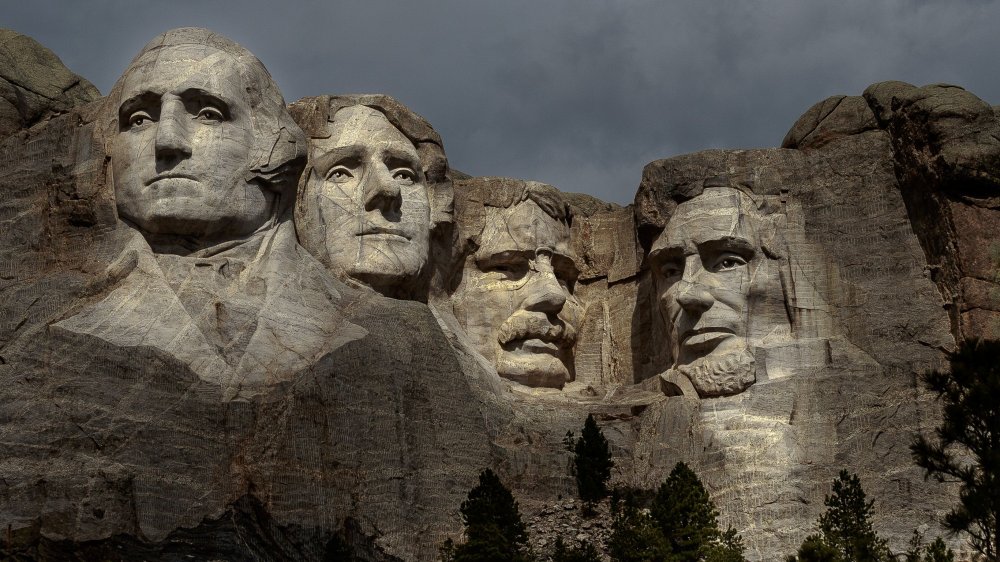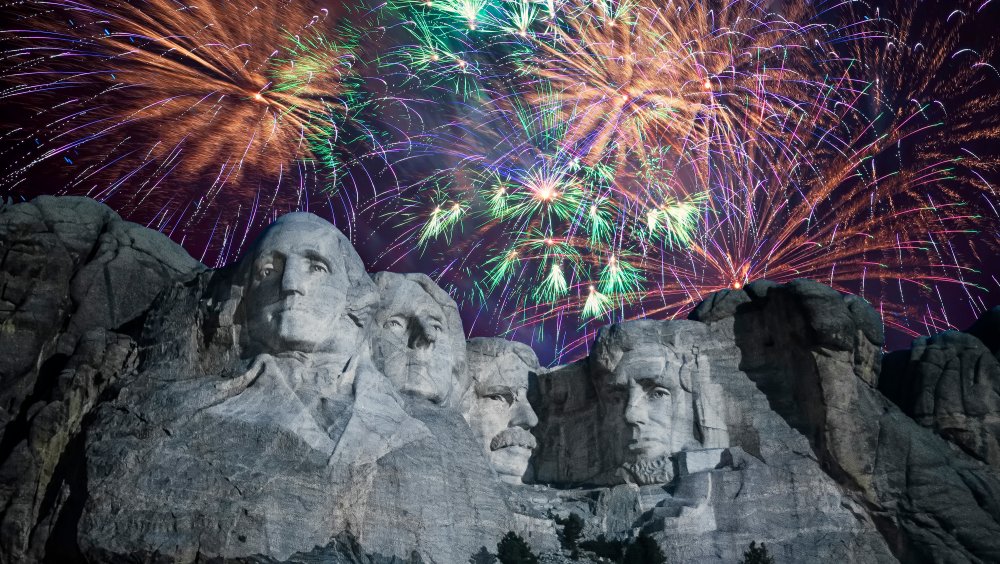The Truth About Mount Rushmore's Secret Room
Situated in the Black Hills of South Dakota, Mount Rushmore seems like the kind of monument you can take at face value. After all, it's literally a collection of faces, two of which are associated with truth-telling. There's of course George "Cherry Tree Chopper" Washington, who supposedly couldn't tell a lie. There's also "Honest Abe" Lincoln, who earned his nickname through his conduct as a store clerk, per the Illinois State Historic Preservation Office. Honest Abe and Choppy George are joined by independent thinker Thomas Jefferson and a man who put the plan in the Panama Canal palindrome: the possibly bulletproof Bull Moose, Teddy Roosevelt.
Also so-dubbed the "Shrine of Democracy," according to History, this grand memorial was commissioned under the much less memorable President Coolidge in 1927. Four hundred men led by sculptor Gutzon Borglum removed about 900 million pounds of rock. Roughly 90 percent of the carving was done using dynamite, according to the National Park Service. That all might sound pretty straightforward. But behind those stone-faced presidents is an inaccessible room with a fascinating backstory.
More than Rushmore
There's more to Mount Rushmore than meets the eye, and originally there was supposed to be more than meets those heads. As History details, Borglum initially planned to depict the presidents from the waist up. However, funding limitations forced him to settle for 60-foot-tall heads. There was also talk of adding a fifth face to the mix: that of Susan B. Anthony. Congress introduced a bill to that effect in 1937, that a rider on the appropriations bill overrode that plan. Borglum's grandest plan for Mount Rushmore also fell through, leaving an incomplete secret chamber behind.
Borglum wanted Mount Rushmore to house replicas of America's most important documents in a man-made cave, according to How Stuff Works. In the 1930s, he created a 70-foot long chamber, which he hoped to furnish with bronze and glass cabinets for storing historic texts. The documents would be etched on sheets of aluminum. Additionally, he wanted to fill the space with busts of famous Americans and adorn the doorway to the chamber with a 15-foot-tall bronze eagle. How much would all of that have cost? Borglum didn't know, and Congress didn't want to know. Lawmakers slammed the door on his room.

